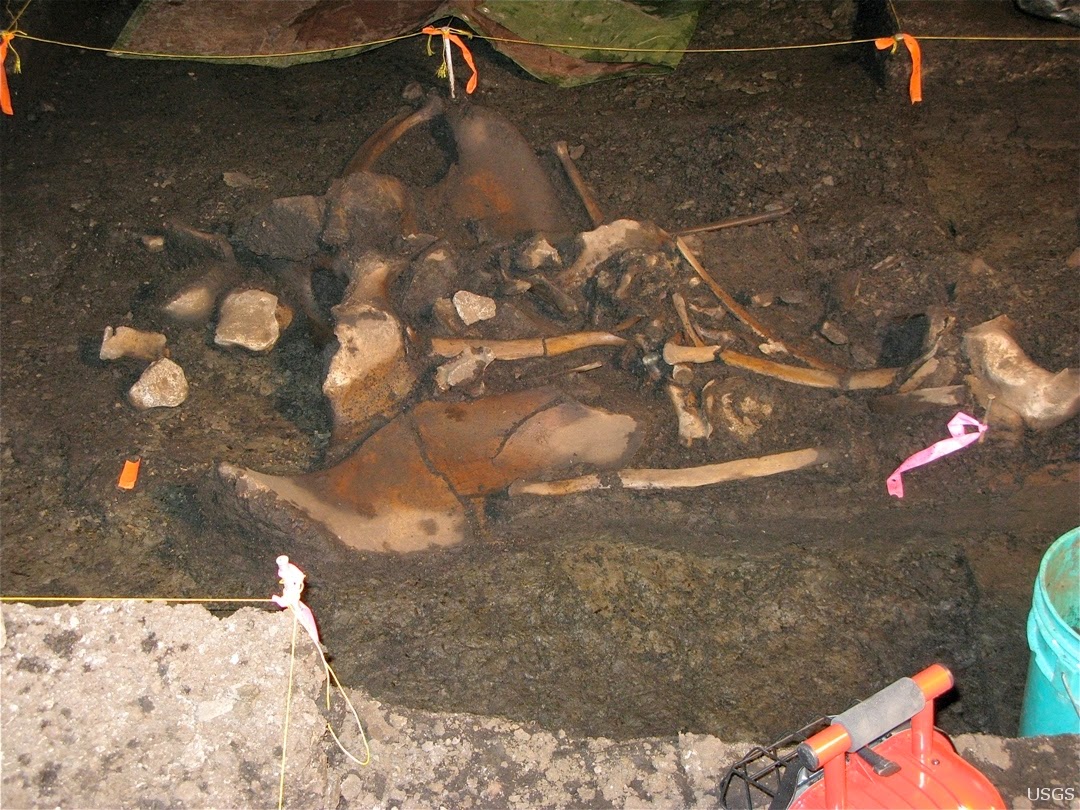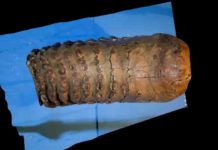
DENVER-Four years ago, a bulldozer operator turned over some bones during construction at Ziegler Reservoir near Snowmass Village, Colorado. Scientists from the Denver Museum of Nature & Science were called to the scene and confirmed the bones were those of a juvenile Columbian mammoth, setting off a frenzy of excavation, scientific analysis, and international media attention. This dramatic and unexpected discovery culminates this month with the publication of the Snowmastodon Project Science Volume in the international journal Quaternary Research.
Fourteen papers by 47 authors from the United States and abroad collectively represent “a new benchmark for understanding climate change in the American West,” said paleontologist Dr. Ian Miller, Snowmastodon Project co-leader and chair of the Museum’s Earth Sciences Department.
Project co-leader and former DMNS chief curator, Dr. Kirk Johnson, and several scientists from the U.S. Geological Survey and academic institutions around the world contributed articles to the journal.
“Nothing beats pulling fossils out of the ground,” said project scientist Dr. Jeff Pigati of the U.S. Geological Survey, “but the site also lets us see what the Colorado Rockies were like during a period of time that we simply couldn’t reach before the discovery.”
The Snowmastodon site was an ancient lake that filled with sediment between 140,000 and 55,000 years ago preserving a series of Ice Age fossil ecosystems. Particularly fortuitous is the high-elevation locale, providing first-time documentation of alpine ecosystems during the last interglacial period between about 130,000 and 110,000 years ago. Because scientists were able to collect and study such a wide range of fauna and flora–from tiny specks of pollen to the bones of giant mastodons–the site emerged as a trove of information that Miller said will inspire future research for years to come.
“This project was unprecedented in its size, speed, and depth of collaboration. The science volume now moves beyond the pure excitement of the discovery to the presentation of its hard science and its implications for understanding the biological and climate history of the Rocky Mountain region,” said Johnson, now the Sant Director of the Smithsonian’s National Museum of Natural History.
Papers in the special edition focus on impacts of climate change, then and now. The site’s ecosystems–plants, insects, and animals combined–varied dramatically in response to climate change.
“In other words, turn the climate dial a little and the ecosystems change considerably. We were also surprised to find that certain periods in the record that seem to be cool elsewhere in North America were quite warm in the central Rockies,” said Miller. “The implication is that alpine ecosystems respond differently to climate change than other, lower elevation ecosystems. These new results have huge implications for predicting present-day climate change in Colorado and beyond.”
Usually fossil sites preserve only snapshots in time, which are then pieced together to understand past time periods. By contrast, the Snowmastodon site captures a nearly continuous 85,000-year time span. As a result, the site provides the best-known record of life and climate at high elevation anywhere in North America.
During a total of 69 days in 2010 and 2011, the Museum mobilized one of the largest fossil excavation efforts ever, recovering more than 5,000 large bones and 22,000 small bones representing roughly 50 different species. The site is most notable for containing the remains of at least 35 American mastodons, representing both genders as well as a variety of ages, from calves to full-grown adults.
“We had no idea that the high Rockies were filled with American mastodons during the last interglacial period,” Miller noted.
While the spectacular array of Ice Age animals initially drew scientists to the site, the opportunity to understand the world that they inhabited proved to be a powerful draw as well. “Scientists from around the world donated countless hours and resources toward the project,” said Pigati. “For so many of them to come together and reconstruct a world that no longer exists in such incredible detail, well that’s just a dream come true.”
Reference:
Kirk R. Johnson, Ian M. Miller, Jeffrey S. Pigati. Introduction to the Snowmastodon Project Special Volume. Quaternary Research, 2014; DOI: 10.1016/j.yqres.2013.12.010
Note : The above story is based on materials provided by Denver Museum of Nature & Science.









